In the world of electrical installations, circuit breakers play a very important role in ensuring the safety of the overall electrical network. There are basically three types of circuit breakers, which are most commonly used not only in the industrial sector but also in households and offices. Circuit-breakers, popularly known as automated circuit-breakers, are divided into several intelligent types, the characteristics of which determine the most suitable niche for the application.
Table of contents:
A circuit breaker, often referred to as a fuse, breaker or plug, is a special component designed to protect your electrical system. When an overload or leakage is detected, it switches off the electricity supply to the internal circuit, thus protecting both users from accidents and equipment from damage. The first slot was described by Thomas Edison in 1879. However, the circuit breaker as we know it today was patented in 1924. The patent was filed by the Swiss company Brown, Boveri & Cie. Within 100 years, its use and efficiency had been improved.
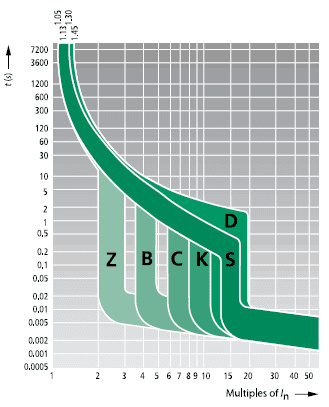 The non-working class of circuit breakers, sometimes referred to as sensitivity, is divided according to their response to overload and short-circuit currents to ensure adequate protection for electrical installations. In other words, this class determines how quickly the circuit breaker will react when disconnecting the power supply to protect the electrical equipment from damage.
The non-working class of circuit breakers, sometimes referred to as sensitivity, is divided according to their response to overload and short-circuit currents to ensure adequate protection for electrical installations. In other words, this class determines how quickly the circuit breaker will react when disconnecting the power supply to protect the electrical equipment from damage.
Type B circuit breakers are among the most common and are predominantly found in households. They are suitable for situations where the starting current of the equipment is not too high, such as lighting and socket circuits. They provide de-energisation after 3 to 5 times the rated current. This intelligently protects electrical equipment from damage and even fires.
Type C circuit breakers are required in areas where the current surge is moderate, such as commercial premises or light industry. They are often used with electric motors and in fluorescent lamp circuits where starting current surges are common. When the current rises 5-10 times the rated value, these circuit breakers detect this as an overload and disconnect the current.
Type D circuit breakers are an important component of electro-automation in heavy industry where very high starting currents are encountered, such as large electric motors and powerful workbenches. They react to overcurrents and disconnect them when they are 10 to 20 times the rated value. This ensures safety and protects equipment from damage.
Type Z circuit breakers protect highly sensitive electronic equipment such as computer power supplies, various medical equipment, electronic sensors and other sensitive devices where fast response and precise overload control are important. They are designed to respond to very small overloads - below 2 times the rated current.
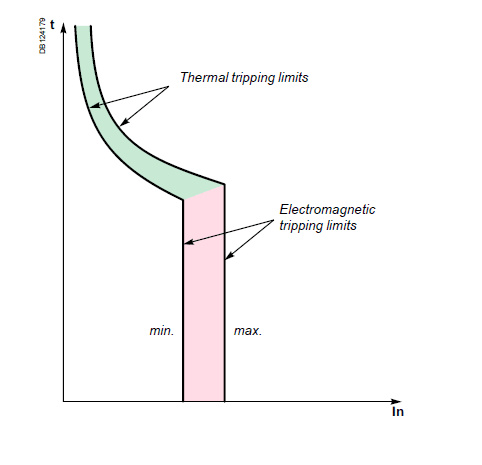 Type K circuit breakers are used in industrial applications where power consumption is very high and additional protection against overcurrent is required. They are found in the energy sector where they ensure the stability of the power supply and protect systems against overloads, for example in power plants and power monitoring systems. In addition, they are used in industrial automation systems where high reliability and stability are required, such as production lines and industrial robots. In these industries, Type K circuit breakers can ensure the safety of electrical equipment, even in high current situations, helping to prevent accidents and maintain system stability. Their response to overcurrent is 8 to 12 times the rated amperage, which ensures system stability and safety.
Type K circuit breakers are used in industrial applications where power consumption is very high and additional protection against overcurrent is required. They are found in the energy sector where they ensure the stability of the power supply and protect systems against overloads, for example in power plants and power monitoring systems. In addition, they are used in industrial automation systems where high reliability and stability are required, such as production lines and industrial robots. In these industries, Type K circuit breakers can ensure the safety of electrical equipment, even in high current situations, helping to prevent accidents and maintain system stability. Their response to overcurrent is 8 to 12 times the rated amperage, which ensures system stability and safety.
| Type | Industies | Triping time | Example |
| B Type | Households, offices | 3-5 times the rated current | Lighting, outlet circuits, appliances with low starting current |
| C Type | Workspaces, light industry, small worktables | 5-10 times the rated current | Electric motors, fluorescent lamps, and other devices with increased starting current |
| D Type | Heavy industry, high-power machinery | 10-20 times the rated current | Large electric motors, equipment with very high starting current |
| Z Type | Industries with sensitive electronics, for which a fast response to disconnection is important | less than 2 times the rated current | Computer power supplies, sensitive electronics |
| K Type | Industries with very powerful equipment that has high starting current surges and requires additional safety | 8-12 times the rated current | Large electric motors, X-ray equipment, compressors |
Each class of circuit breaker is designed for specific conditions and solutions to ensure optimum protection and efficiency in electrical installations. When selecting a circuit breaker, it is important to consider both current and potential future needs.
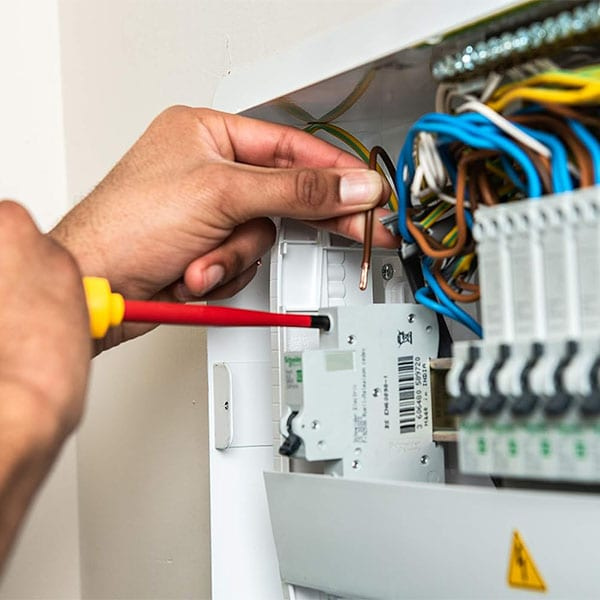 The classic MCB (Miniature Circuit Breaker) is a common component in electrical installations that serves as a switch that opens an electrical circuit when excessive current flows through it. Unlike fuses, MCBs can be re-energized after tripping, thus improving safety and control. They are often used as an alternative to fuse switches in a variety of settings, from domestic to industrial. MCB circuit breakers come in different types and have different tripping characteristics to suit specific applications.
The classic MCB (Miniature Circuit Breaker) is a common component in electrical installations that serves as a switch that opens an electrical circuit when excessive current flows through it. Unlike fuses, MCBs can be re-energized after tripping, thus improving safety and control. They are often used as an alternative to fuse switches in a variety of settings, from domestic to industrial. MCB circuit breakers come in different types and have different tripping characteristics to suit specific applications.
When selecting an MCB for a specific application, factors such as rated current, breaking capacity and MCB type must be taken into account to ensure safe protection against overloads and short-circuits. Correct selection is essential to prevent frequent tripping or inadequate protection of connected loads and equipment.
| Type: | A, B, C, D, H, K, Z |
| Current: | 0.5A - 125A |
| Tripping: | <2 - 20 times of nominal |
| Poles: | 1P - 4P |
| Load capacity: | 4.5kA - 25kA |
| Voltage: | to 400V |
| A9F73120 | 20A | 1P | Schneider Electric |
|
||
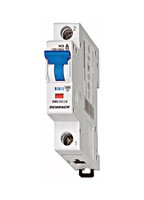 |
BM618116 | 16A | 1P | Schrack Technik |
|
|
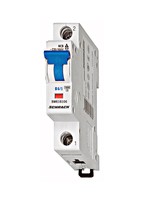 |
BM618106 | 6A | 1P | Schrack Technik |
|
|
 |
BM618332 | 32A | 3P | Schrack Technik |
|
|
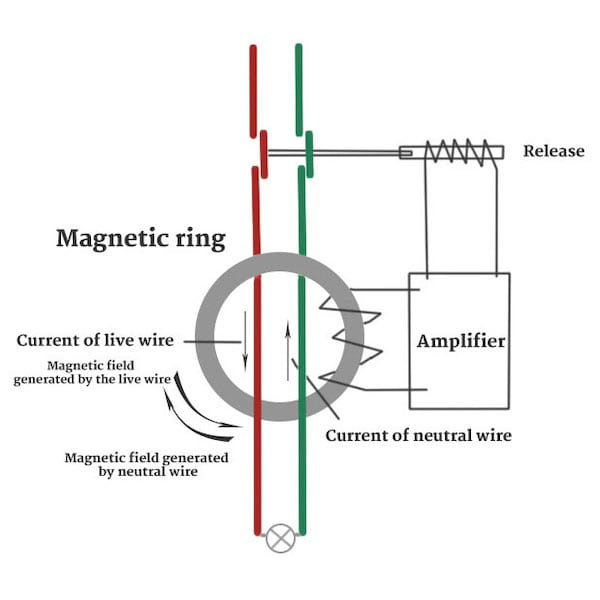 Residual current circuit breakers (RCCBs) are devices that are not very common, but are becoming more and more sought after because of their critical role in the context of electrical safety. Unlike modular circuit breakers, which react to overloads, RCCBs monitor power losses in the network. This means that if current starts to flow away uncontrolled, for example through a person or a faulty wire, these machines react immediately, preventing a potentially dangerous situation and protecting life and property. Such machines are very important because they provide an extra level of electrical safety, which is vital in various electrical installations and industrial environments where safety is a priority.
Residual current circuit breakers (RCCBs) are devices that are not very common, but are becoming more and more sought after because of their critical role in the context of electrical safety. Unlike modular circuit breakers, which react to overloads, RCCBs monitor power losses in the network. This means that if current starts to flow away uncontrolled, for example through a person or a faulty wire, these machines react immediately, preventing a potentially dangerous situation and protecting life and property. Such machines are very important because they provide an extra level of electrical safety, which is vital in various electrical installations and industrial environments where safety is a priority.
| Class: | A, AC, B |
| Current: | 16A - 125A |
| Tripping: | 6kA - 10kA |
| Poles: | 1P - 4P |
| Sensitivity: | 10mA - 1000mA |
| Voltage: | to 440V |
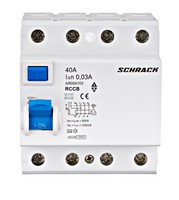 |
AR054103 | 40A | 4P | Schrack Technik |
|
|
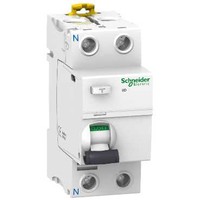 |
A9R41263 | 63A | 2P | Schneider Electric |
|
|
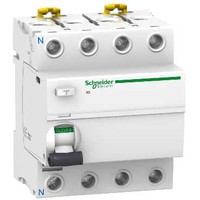 |
A9R21425 | 25A | 4P | Schneider Electric |
|
|
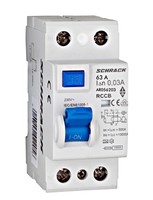 |
AR056203 | 63A | 3P | Schrack Technik |
|
|
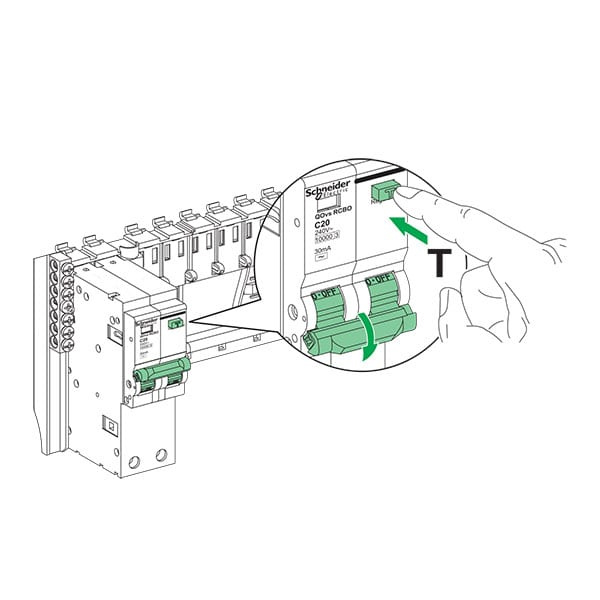 Combined circuit breakers (RCBOs) are an essential component of electrical networks, combining two important types of circuit breakers - modular and leakage. This device is able to react to both overvoltage and blackouts, thus providing pallet protection against potentially dangerous power failures.
Combined circuit breakers (RCBOs) are an essential component of electrical networks, combining two important types of circuit breakers - modular and leakage. This device is able to react to both overvoltage and blackouts, thus providing pallet protection against potentially dangerous power failures.
The combination circuit breaker acts as a protection device to ensure safety against power failures and to prevent power leakage during temporary faults in the electrical system. It is particularly common in electrical networks subject to high loads and requiring robust and reliable protection.
A major advantage of the combined circuit breaker is that both surge and leakage protection functions are contained in a single module. This not only reduces the number of switches in the switchgear rows, but also simplifies and makes the maintenance and management of the power supply systems more efficient.
| Type: | B, C, D |
| Current: | 2A - 40A |
| Tripping: | 6kA - 10kA |
| Poles: | 1P - 4P |
| Sensitivity: | 30mA - 100mA |
| Voltage: | to 400V |
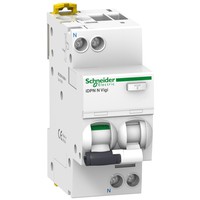 |
A9D31616 | 16A | 2P | Schneider Electric |
|
|
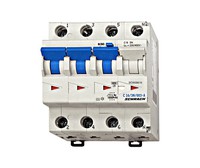 |
BO668816 | 16A | 4P | Schrack Technik |
|
|
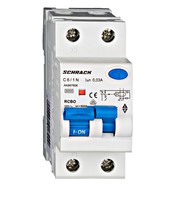 |
AK667606 | 6A | 2P | Schrack Technik |
|
|
 |
A9D20610 | 10A | 2P | Schneider Electric |
|
|
| Parameters | MCB | RCCB | RCBO |
|---|---|---|---|
| Current | 6A - 63A | 16A - 100A | 6A - 63A |
| Voltage | 240/415V (AC) | 240/415V (AC) | 240/415V (AC) |
| Standstill speed range | 2.5 ms (short circuit), 2s - 2 min (overload) | < 30ms | < 30ms |
| Usage | Electrical installations, equipment protection | Electrical installations, leakage protection | Combined surge and leakage protection |
| Tripping sensitivity | Not specifically defined, depends on type | 6mA, 10mA, 30mA, 50mA, 100mA | 6mA, 10mA, 30mA, 50mA, 100mA |
| Tripping speed | 2.5 ms - 2 min (depends on congestion) | < 30ms | < 30ms |
| Poles | Usually single or 2-pole | Usually 2-pole or 4-pole | Usually single or 2-pole |
Looking at the three types, each has its own unique advantages and applications. The MCB is generic and broadly applicable, providing protection against overloads and short circuits, while the RCBO offers combined protection against both overvoltages and leakage currents. RCBs, on the other hand, although less common, are extremely important as they can quickly prevent potentially dangerous power leakages that could cause serious damage to life and property. In summary, the correct choice of circuit breaker is essential to ensure the reliability and safety of electrical systems, whether for domestic or industrial applications.
